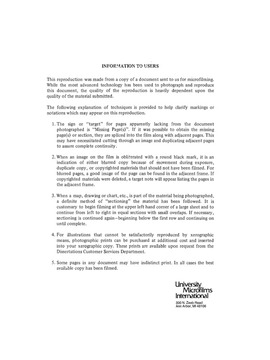| dc.contributor.author | Glenn, James Howard, | en_US |
| dc.date.accessioned | 2013-08-16T12:28:35Z | |
| dc.date.available | 2013-08-16T12:28:35Z | |
| dc.date.issued | 1982 | en_US |
| dc.identifier.uri | https://hdl.handle.net/11244/5004 | |
| dc.description.abstract | His compositional strengths, on the other hand, were an outgrowth of his education. As in the Venetian manner, antiphonal interplay comprised a large portion of the four motets. Also, Aichinger employed short, concise textual groupings requiring short musical phrases. | en_US |
| dc.description.abstract | Aichinger was a composer of outstanding ability, yet his biographical sketch shows very little information regarding his early life. With the exception of two trips to Italy, during one of which he studied with Giovanni Gabrieli, he spent his entire life living within thirty miles of his birthplace in Bavaria. He was born and initially educated in Regensburg, received his higher education at the University of Ingolstadt, and was employed in Augsburg. The latter was a result of his lifelong association with the wealthy Fugger family. | en_US |
| dc.description.abstract | As important as the previous compositional characteristics are, Aichinger's true genius was most significantly demonstrated through the manipulation of the many and varied motives that he devised. This was achieved by means of four techniques: augmentation, invertible counterpoint, stretto, and most significantly stimmtausch. | en_US |
| dc.description.abstract | Gregor Aichinger was a composer of great ability. His works reflect the transitional period in which he lived, from his compositions in the Venetian style, to those in the newer concertato style. | en_US |
| dc.description.abstract | The four motets edited from the Liber Sacrarum Cantionum of 1597, include Benedicam Dominum, pt. 1, and Quis est homo, pt. 2 for five voices, Adesto unus Deus for seven voices, and Laudate Dominum for eight voices. The in-depth analyses have been done according to formal, modal, melodic, motivic, and rhythmic structure. Also, polyphonic/homophonic textural effects and expressive textual effects have been identified and discussed. | en_US |
| dc.description.abstract | This study was concerned with the preparation and analysis of modern performing editions of four motets from Gregor Aichinger's Liber Sacrarum Cantionum, quinque, sex, septem et octo vocum of 1597. | en_US |
| dc.description.abstract | It was found that Aichinger was conservative in his basic compositional approach. He used only two modes, Dorian and Ionian, in the entire 1597 collection. Also, his sparing use of chromatic alterations and the restrictions placed on the scale degrees upon which all cadences were constructed were examples of compositional conservatism. | en_US |
| dc.format.extent | xi, 218 leaves : | en_US |
| dc.subject | Music. | en_US |
| dc.title | Gregor Aichinger (1564-1628) : | en_US |
| dc.type | Thesis | en_US |
| dc.thesis.degree | D.M.A. | en_US |
| dc.thesis.degreeDiscipline | School of Music | en_US |
| dc.note | Source: Dissertation Abstracts International, Volume: 43-05, Section: A, page: 1340. | en_US |
| ou.identifier | (UMI)AAI8224197 | en_US |
| ou.group | Weitzenhoffer Family College of Fine Arts::School of Music | |
